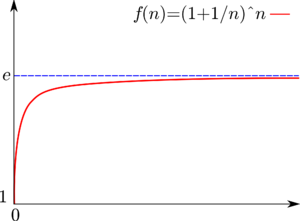Limit of a function
 From Citizendium - Reading time: 1 min
From Citizendium - Reading time: 1 min

In mathematics, the concept of a limit is used to describe the behavior of a function as its argument either "gets close" to some point, or as it becomes arbitrarily large.
Suppose f(x) is a real-valued function and a is a real number. The expression
means that f(x) can be made arbitrarily close to L by making x sufficiently close to a. We say that "the limit of the function f of x, as x approaches a, is L". This does not necessarily mean that f(a) is equal to L, or that the function is even defined at the point a.
Limit of a function can in some cases be defined even at values of the argument at which the function itself is not defined. For example,
although the function
is not defined at x=0.
Formal definition[edit]
Let f be a function defined on an open interval containing a (except possibly at a) and let L be a real number.
means that
- for each real ε > 0 there exists a real δ > 0 such that for all x with 0 < |x − a| < δ, we have |f(x) − L| < ε.
This formal definition of function limit is due to the German mathematician Karl Weierstrass.
 KSF
KSF